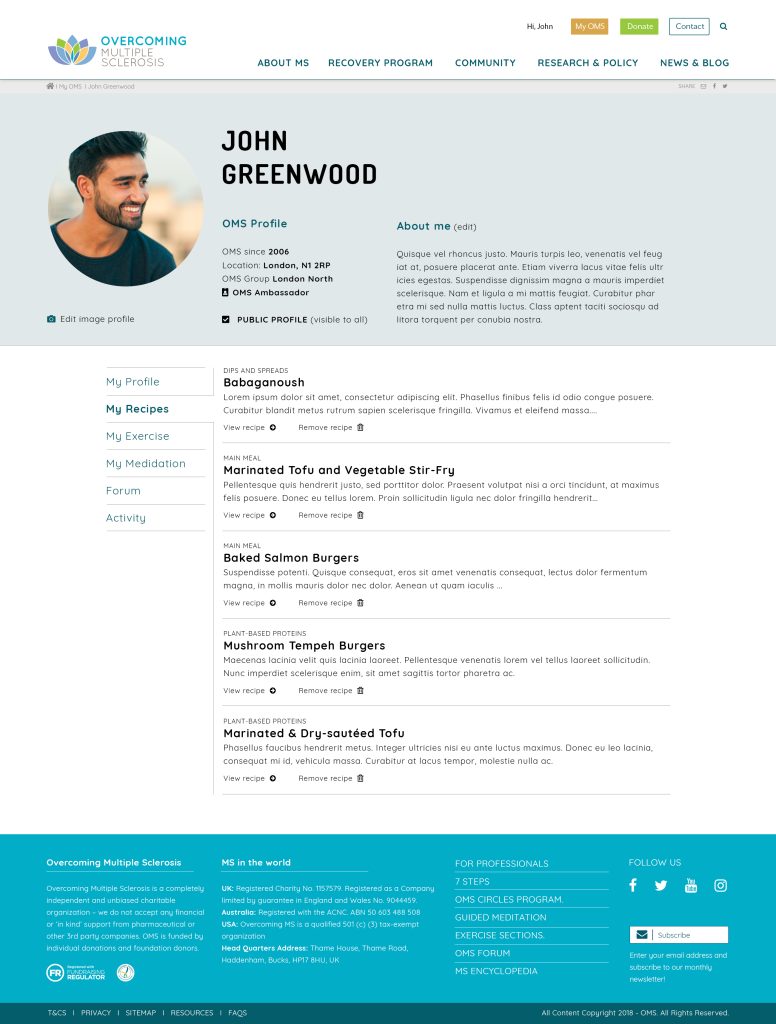Client aim
They were Overcoming MS (OMS), a charity dedicated to promoting an evidence-based 7-step lifestyle recovery program for people living with multiple sclerosis (MS). Their goal was to be a globally recognised digital charity that could reach every single person with MS online and provide them with useful, easy-to-understand information about MS and the OMS Recovery Program. They wanted to enable people with MS to make informed choices about their health and empower them with the tools and resources they needed to make sustainable diet and lifestyle changes.
In order to fulfil this goal, the client recognised the importance of a UX discovery phase to understand the needs and behaviours of their target users. Their challenge was to achieve this ambitious goal while maintaining the personalised level of support and sense of community that OMS had become known for. They believed that a well-designed online platform was crucial in helping them achieve their mission of informing, educating, and empowering people with MS.





